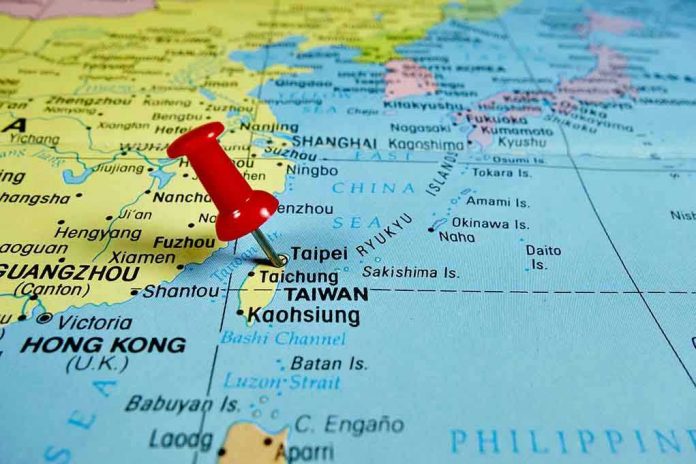
As Taiwan braces for potential conflict with China, its latest air raid drill underscores a stark reality: the threat of war looms ever closer.
At a Glance
- Taiwan’s 2025 Urban Resilience Exercise merges civil and military preparedness.
- The drills focus on air raid responses, wartime aid distribution, and mass-casualty simulations.
- President Lai Ching-te emphasizes the necessity of these drills amidst persistent threats from China.
- Public engagement remains mixed, reflecting challenges in fostering a culture of preparedness.
Taiwan’s Strategic Preparedness
For decades, Taiwan has stood as a beacon of democracy, a thorn in the side of China’s communist regime, which relentlessly claims sovereignty over the island. In a world where Beijing’s military prowess grows and its sabers rattle louder, Taiwan’s air raid drills have evolved into a comprehensive Urban Resilience Exercise. From July 15 to 18, 2025, these drills were not just about air raid responses. They involved wartime aid distribution and mass-casualty simulations, reflecting an integrated approach to civil and military preparedness.
The Taiwanese government, under President Lai Ching-te, who has emphasized heightened defense awareness, organized these drills. The exercise took place amidst increasing Chinese military activity near Taiwan, with frequent air and naval incursions heightening the island’s sense of urgency. In response, the drills were conducted in major urban centers like Taipei, New Taipei, and Taoyuan. These scenarios are not merely theoretical exercises; they are a response to the real and present danger posed by China’s aggressive posturing.
Public Perception and Engagement
Despite the government’s efforts, public engagement with these drills remains varied. Some Taiwanese civilians actively participate, understanding the necessity of preparedness in the face of potential Chinese aggression. However, reports suggest that many residents treated the drills casually, a concerning development given the stakes. The drills temporarily disrupted daily life, with streets cleared and public transportation operating under special protocols. Yet, the indifference demonstrated by some residents indicates an ongoing challenge in fostering a culture of vigilance and readiness.
The merging of the Wan An and Min An drills into the Urban Resilience Exercise is a strategic move, reflecting a shift toward comprehensive urban defense strategies. This approach not only aims to prepare the civilian population but also signals to Beijing and international allies, particularly the United States, that Taiwan is serious about its defense. The drills serve both practical and symbolic purposes, aiming to deter aggression, reassure allies, and prepare the population for potential conflict scenarios.
International Implications and Reactions
The geopolitical implications of these drills cannot be overstated. As tensions between Taiwan and China continue to escalate, the world watches with bated breath. The United States, Taiwan’s key security backer, observes these exercises as a measure of deterrence. The drills reassure international allies that Taiwan is not only willing but also prepared to defend its sovereignty. However, while the drills demonstrate Taiwan’s commitment to its defense, they also highlight the potential costs of conflict preparedness.
President Lai Ching-te has been clear: “Each drill allows our country to further enhance its ability to defend itself… we have no choice but to stay fully prepared.” This statement underscores the gravity of the situation. The Taiwanese government is not interested in provoking China, but in ensuring the safety and security of its people. The drills are a necessary response to persistent threats and a reminder of the importance of readiness in an increasingly volatile world.







